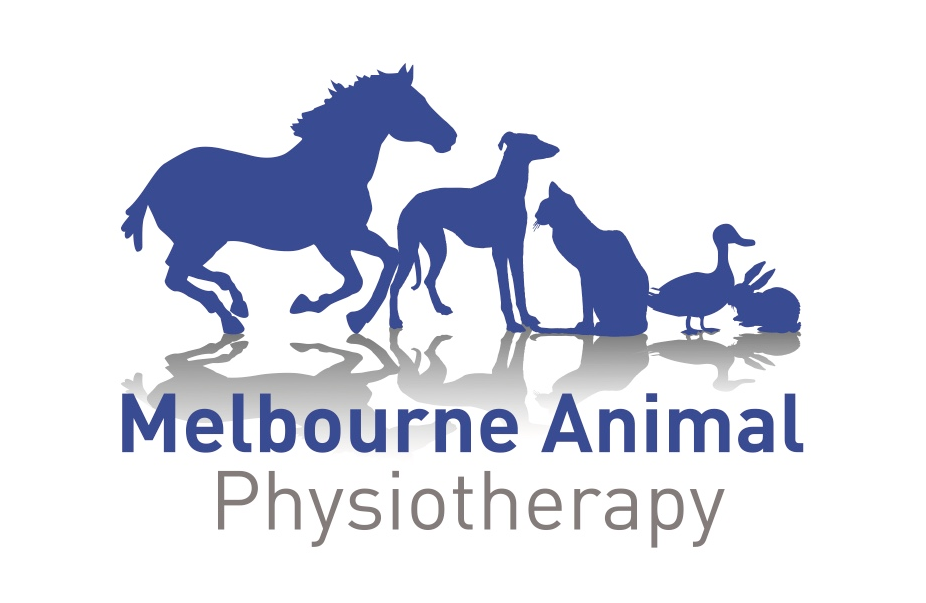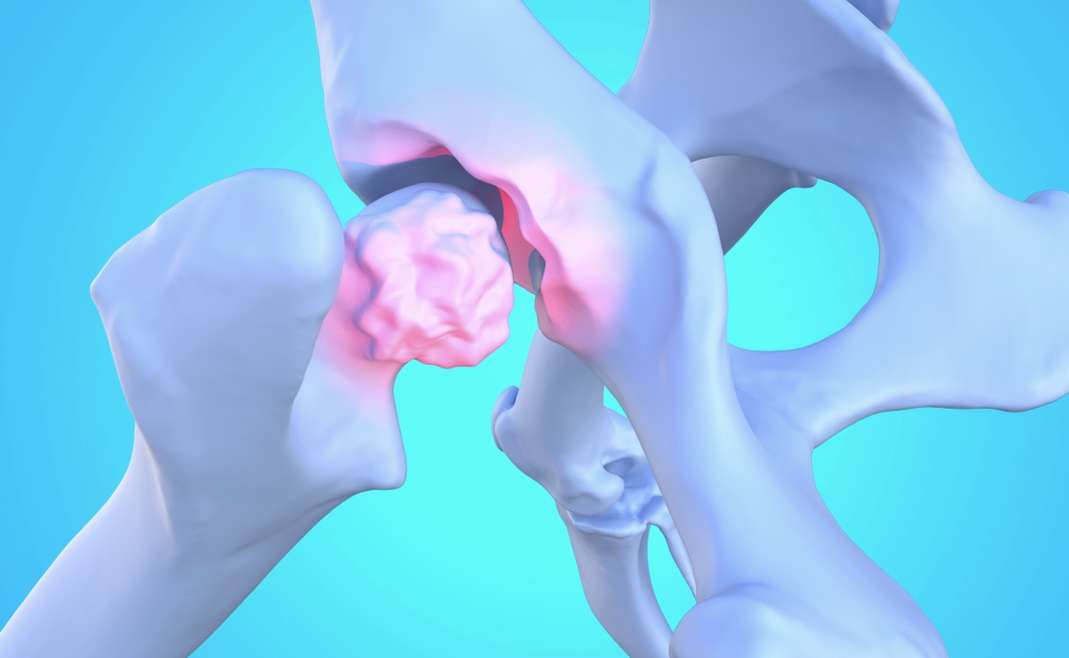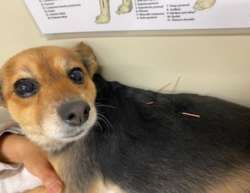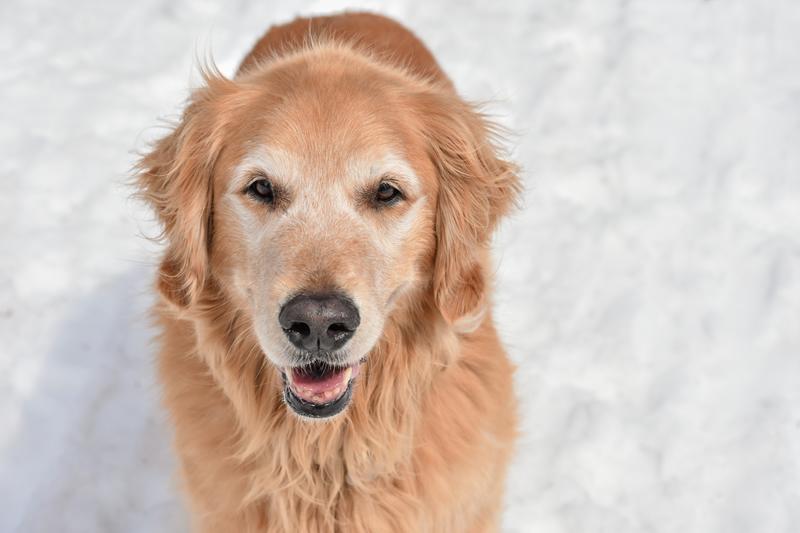Does your dog experience difficulty getting up, tires easily or seems stiff? Arthritis may be the cause. The most common form is osteoarthritis, resulting in degeneration of the joints.
Osteoarthritis occurs when the cartilage protecting the bones of the joint is destroyed. The joint loses its cushion, causing friction between bones, leading to pain and decreased mobility in affected joints. Inflammation of the cartilage can also stimulate bony growths (spurs) to form around the joints. Since cartilage has no nerve supply, damage can progress with no outward symptoms until the joint is severely damaged and the lubricating fluid has lost its ability to protect the bone surfaces. Although any joint in a dog’s body can be affected by arthritis, the most commonly affected joints are the hips, elbows, lower back, knees and wrists.
The other less common type of arthritis affecting dogs is inflammatory joint disease, usually caused by an infection, such as bacterial or fungal infection, tick-borne disease and Rocky Mountain spotted fever. This type of arthritis can also be caused by an underlying defect in your dog’s immune system, which may be hereditary.
Factors contributing to a dog developing arthritis include aging, congenital joint disorders like hip dysplasia, osteochondrosis, elbow dysplasia, old injuries, repeated trauma to joints, activity levels in working and athletic dogs placing increased stress on joints, obesity, and metabolic diseases such as diabetes and Cushing’s disease.
Arthritis symptoms include stiffness, lameness, or limping after rest; appetite loss or unusual weight gain; inactivity and sleeping more; reluctance to walk, run or climb stairs; unusual urinating in the house; and irritability and other behavioral changes. A veterinarian can diagnose arthritis based on your dog’s age, medical history, and a physical exam. X-rays of the joints may be necessary to determine severity of disease.
Non-medical approaches to minimize arthritic aches and pains include:
- Weight control. If your dog is overweight, this puts added stresses on joints, causing greater joint damage and more severe arthritis. Helping your dog lose weight will help minimize further joint damage.
- Food. The right mix of dietary fatty acids can do more than improve your dog’s skin and coat. Research shows that eicosapentaenoic acid (EPA), an omega-3 fatty acid, can help reduce inflammation, help limit damage to cartilage and reduce the symptoms of arthritis in dogs. Ask your veterinarian for foods that provide high levels of EPA.
- Exercise. Light to moderate exercise helps keep stiff joints supple and mobile. The exact exercise requirements depend on the individual dog, with 15 to 20 minutes of exercise twice daily often recommended, rather than one long, 40-minute walk. Ideal is swimming, a low-impact activity that improves muscle mass without overstressing joints.
- Animal physical rehabilitation. Rehabilitation therapy can include underwater treadmills. Like techniques used to help humans with arthritis, canine physical therapy utilizes applications of cold and heat, massage, stretching and range-of-motion exercises to maintain joint health and muscle strength. Rehabilitation can relieve pain and promote cartilage, tendon and ligament health.
- Natural over-the-counter treatments. Pills or food containing glucosamine and chondroitin sulfate or Omega fatty acids have shown to ease arthritis symptoms in dogs.
- Acupuncture and massage. Although controlled clinical studies are lacking, there are many anecdotal reports on the use of acupuncture to help relieve pain from hip dysplasia and degenerative joint disease in dogs. You can also gently massage your dog’s painful joints to help restore blood flow.
Medically managing canine arthritis is aimed at controlling pain, increasing mobility, slowing down joint degeneration and encouraging cartilage repair. Options include:
- Non-Steroidal Anti-Inflammatory Drugs. (NSAIDs). Aspirin and many other modern and prescription medications reduce pain and inflammation. Because of the side-effects associated with the use of anti-inflammatory drugs, many vets will choose to run a blood test to ensure that the liver and kidneys are in working order before initiating this treatment.
- Glucocorticoids (commonly known as steroids or cortisone). Given as tablets or injections, these drugs have a higher anti-inflammatory effect than NSAIDs, but long-term use may cause more obvious and serious side effects.
- Chondroprotectants. Helping protect cartilage as it attempts to repair itself, these drugs are increasingly popular in treating degenerative joint disease. This category includes the FDA-approved Adequan for management of degenerative joint disease in dogs, which works by inhibiting enzymes that contribute to cartilage destruction. Administered by intramuscular injection, studies show when puppies diagnosed with hip dysplasia were given Adequan before arthritic changes occurred, their radiographs showed significant improvement and development of degenerative joint disease was delayed.
- Surgery. If your dog’s joints become severely damaged or if the pain is intense, your veterinarian may recommend surgery to reduce pain and improve movement and function. Among the different kinds of procedures for degenerative arthritis is arthroscopic surgery, which involves making small incisions through which the surgeon can clean cartilage debris from the joint. Other surgeries are aimed at repairing bone deformity, fusing joints or rebuilding part of a joint. Your dog may also undergo an operation to replace a damaged joint with an artificial joint.
Preventing or delaying arthritis later in life can begin in puppyhood with these strategies:
- If you’re buying a purebred puppy, choose a reliable breeder who should have X-rays taken of hips and elbows to prevent dogs with poor joint conformation from breeding.
- Don’t let your puppy eat too much or over-exercise. Providing a wholesome diet with added calcium and omega 3 may also help delay or prevent arthritis.
- Providing a comfortable sleeping space for your puppy will help prevent him from laying in awkward positions and relieve unnecessary pressure on his joints.



